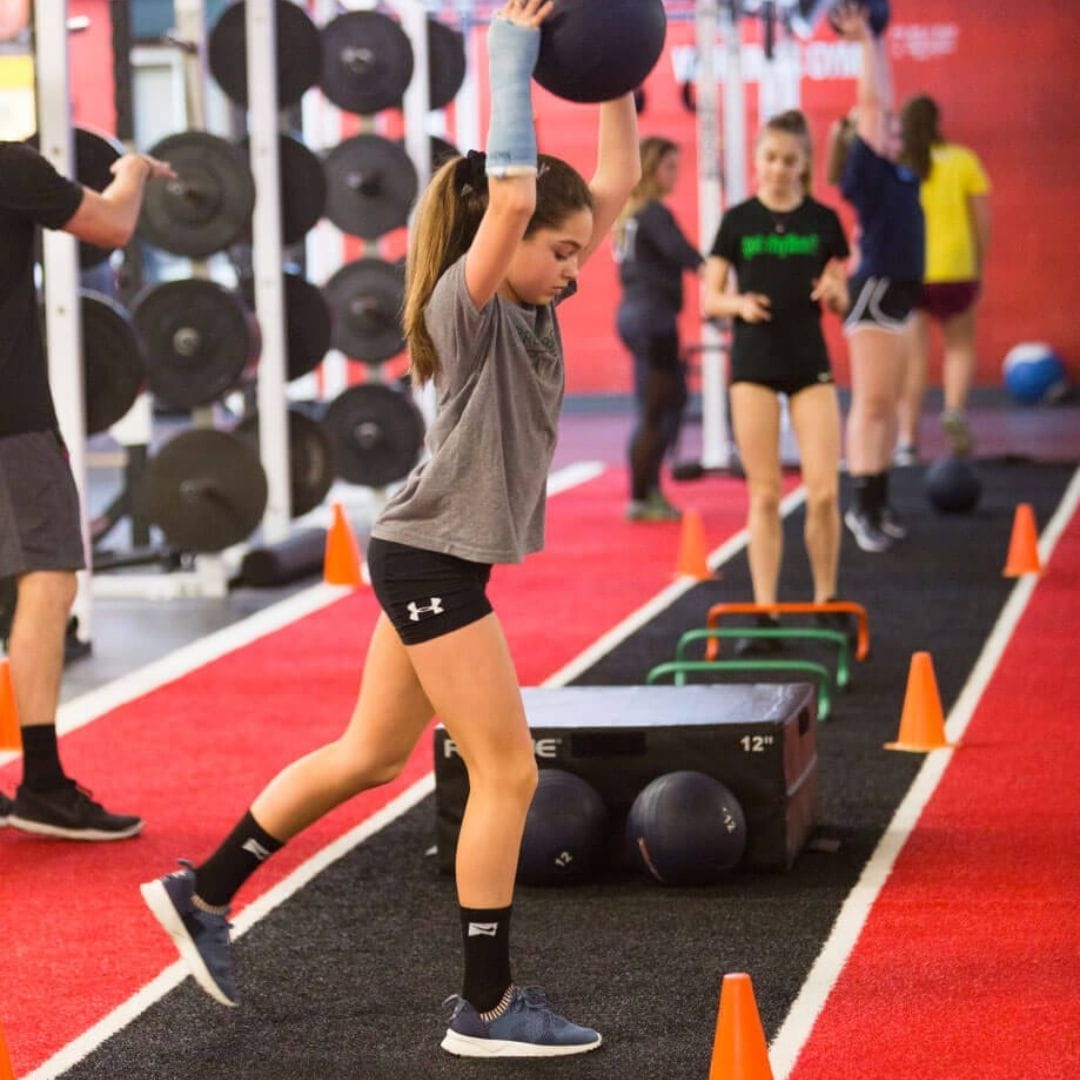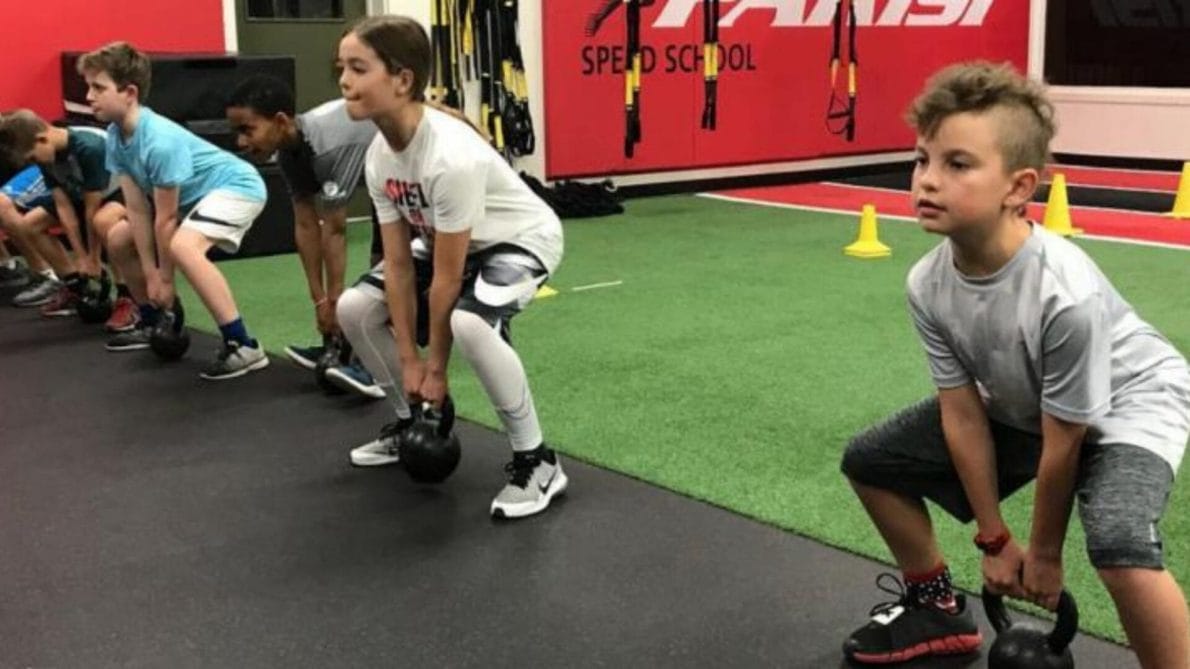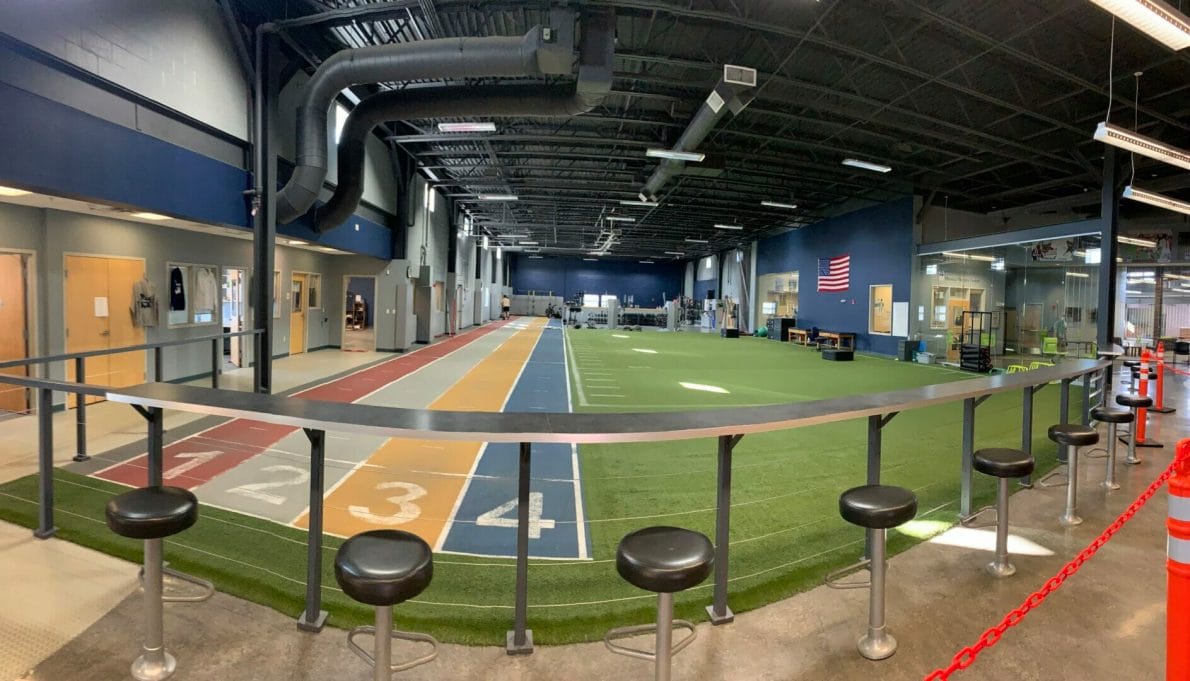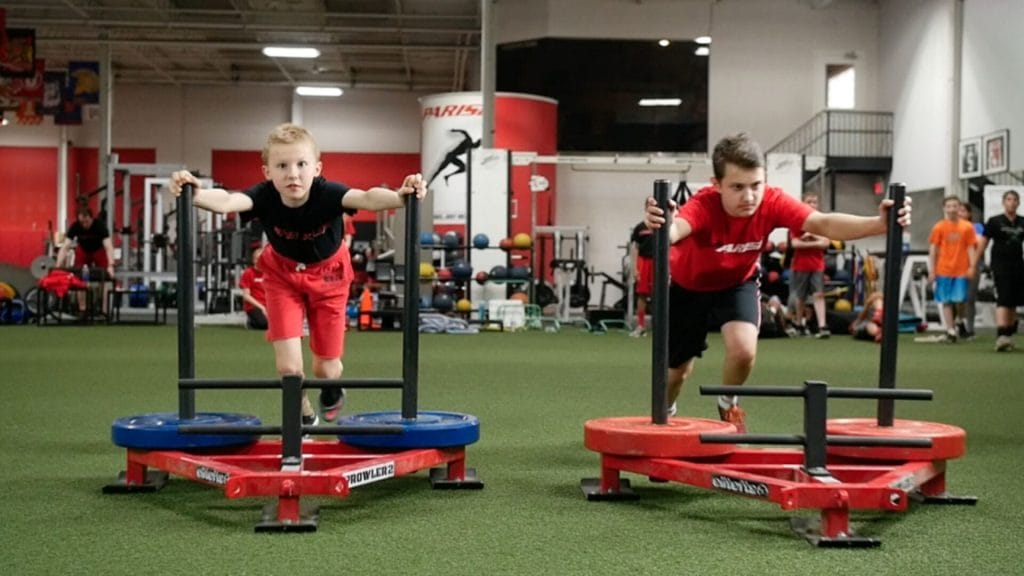Table of Contents

Introduction
The landscape of sports performance has undergone a transformative shift, particularly in the attitude towards youth strength training. The old belief that strength training could hinder a young athlete’s agility and speed has been debunked. Nowadays, the focus is on the numerous benefits that well-designed sports performance programs bring to the table for youth athletes. However, the pressing question remains: Is it advisable for young athletes to engage in strength training?
The straightforward answer is a definitive yes, albeit with essential considerations in mind.
The Evolution of Youth Strength Training for Athletes
A pivotal change in perspective is the acknowledgment that youth strength training when tailored to the athlete’s age, can be seamlessly woven into their training ritual. Studies conclusively prove that supervised strength training, emphasizing proper technique, and age-appropriate intensities not only plays a significant role in youth injury prevention but also promotes several health advantages. These benefits range from enhanced blood sugar levels and increased bone density—a notable point for female athletes—to superior muscle growth and coordination.
Customizing Training According to Developmental Stages
It’s critical to align strength training programs with the athlete’s stage of development. Children at the elementary, middle, and high school levels have distinct requirements, necessitating varied training methodologies to optimally support their growth and athletic evolution.
Elementary school athletes should focus on boosting gross motor skills and coordination, leveraging exercises that build strength and enhance movement quality. Learning to master the basics like squat and lunge patterns, chin-ups, core variations, etc. This doesn’t mean, leading them down to the power rack, loading them up with weight on a barbell, and seeing how much iron they can back squat. Using age-appropriate apparatus like medicine balls, tidal tanks, bands, and kettlebells can provide the right amount of stimulus to get the job done.
Middle schoolers, navigating the challenges of growth spurts and puberty, need training that acknowledges and adapts to their evolving physical changes. Beginning to introduce them to resistance devices like dumbbells, barbells, sleds, and cable machines is a good start but the focus again needs to be on mastering technique vs huge amounts of weights. Additionally with all of the center of gravity variability within these growth spurts there needs to be a focus on total body stability around the core, shoulders, and hips. Where many programs fall short is that they emphasize moving heavy weight vs getting athletes to understand technique which can lead to injuries.
For high school athletes, the training can shift towards more sophisticated strength exercises. Athletes can be introduced to different exercise variations and increased loads now that they have mastered the basics. They can also shift their training emphasis to maximize muscle growth, speed, and explosive power, while still emphasizing flexibility and injury prevention. It remains important to pay attention to their needs surrounding flexibility vs stability depending on their body type. We typically make this distinction in their warm-up plan.
The Indispensable Value of Strength Training
At its core, strength training establishes a robust foundation for athletic progression. It advances motor skills, muscle mechanics, and coordination. More than just enhancing physical prowess, it plays a crucial role in reducing injury risks by encouraging proper form and technique, thus improving joint flexibility, tendon strength, and core stability.
Apart from the physical benefits, youth
strength training significantly boosts confidence and sports-specific performance. Despite concerns about its safety, evidence shows that with appropriate supervision, focus on correct technique, and age-specific loads strength training is not only secure but vital for nurturing durable athletes ensuring a long and healthy career.

Diversifying Training to Sustain Engagement
To avert burnout and maintain enthusiasm, integrating a variety of training activities is key. Incorporating diverse workouts, including youth strength training, allows for a holistic approach to athletic development, ensuring that young athletes remain motivated and committed. Offering a variety of training devices like bands, medicine balls, bodyweight exercises, water bags, boxes, and sleds can help break up the monotony of training and ensure that kids stay engaged in training activities.
It’s also important to include strength training as a part of a well-laid-out sports performance development program. Strength training is one element in building a strong athletic foundation. A well-rounded program should also include speed training (acceleration and top speed), change of direction (agility), power, balance, endurance, flexibility, injury prevention, nutrition, and self-confidence. Seek programs that offer a complete model and not just a singular element within the athletic development continuum.
Battling Myths Surrounding Youth Strength Training
Dispelling the misconception that resistance training poses a high risk for young participants is crucial. Most injuries are preventable with diligent, safety-centric coaching and a steadfast dedication to proper technique. For years it has been said that youth strength training will stunt a child’s growth (there isn’t a shred of evidence to support that) or that the loads are too dangerous. One only has to observe the weight of the backpacks that kids carry around these days or see the types of jumps these kids do off a playground to understand that there is no way I could ever replicate the forces in the performance center that kids place on themselves during free play.
What is very clear though is that the true danger to a child’s development and greatly elevates their risk of injury is single sport activity at a young age. If you want to virtually guarantee injury and loss of interest in sports at a young age then go ahead and enroll your son or daughter in one sport and have them play that sport year-round. The research is overwhelmingly clear on this topic. Have your child play multiple sports or engage in structured athletic development programs that work on speed, strength, power, agility, flexibility, endurance, and nutrition. Single sports specialization at a young age is detrimental to an athlete’s success.

Conclusion: The Critical Place of Strength Training in Young Athletes’ Regimens
In essence, youth strength training shouldn’t just be considered beneficial—it’s an essential component of a young athlete’s training journey. With a clear understanding of its advantages and mindful considerations, we can better equip our youth to achieve their highest athletic potential while significantly minimizing injury risks and optimizing performance.
Now you have a choice…
You can go it alone and can keep following the model of playing more games, more practices, and just working on skills in hopes of developing your child for athletic success. Trying to read articles and figure out the best way to do things, which in most cases costs more money over time and leads to inferior results…..
……..Or you can take a more proactive approach and seek out some professional guidance that will drastically increase their strength, speed, power, agility, make them more injury-resilient, and lead to a greater level of confidence on the field. All of which will have a major impact on their sports skill acquisition and on the field/court performance.
Which do you prefer?
Shoot us an email at info@skolfieldperformance.com. We offer a comprehensive sports performance program that includes youth strength training that begins with a personalized evaluation.
Discover how we can assist them in achieving their sports performance goals. For more information and to embark on your journey toward peak athletic performance visit our website at www.skolfieldperformance.com or click HERE.


